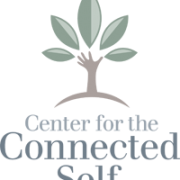The First Mile is a Liar – True of Running and Resolutions
A while back, a friend of mine told me that “when it comes to running, the first mile is a liar.” I am not sure who was the original source of this insight, but it really resonated with me.
I am not much of a long distance runner, but I run occasionally when I want to bring more variety into my fitness routine. Historically, I would try to set an intention or a goal for my runs, based on time or mileage. I thought that it might be easier to keep going if I kept an end goal in mind.
Invariably, I would find that within minutes of starting my run, voices of doubt would creep in…
“Am I really up for this today?”
“How am I going to make it X number of miles?”
“Wow, I don’t remember it being this hard. I must have gotten out of shape.”
As you can probably guess, these voices did nothing to improve my confidence or my performance. There were plenty of times when I decided that I would call it a day early, telling myself that I would try again tomorrow when I had more energy.
Eventually, I realized that the days that my runs went well were the days that I managed to ignore the voices of doubt during the first mile or so. With enough endorphins and momentum behind me, the voices would seem to fade away. Then I would suddenly realize that I had not only met my running goal, but I felt like I could keep running further.
I started to realize that if I could just push past any voices of doubt for long enough, it would all become more manageable. I knew I would eventually hit my stride, and I knew that once I did the distance and time would start to melt by.
So instead of listening to voices of doubt or dwelling on how much further I had to run, I would focus on running to “that next tree” or keeping my speed up for “just one more song.” I would focus on anything that kept me moving, and it helped.
I still value big picture goals for my running. They let me know where I’m heading and they can be helpful for setting my pace. I have realized, though, that frequently checking in on my progress towards a big goal can get in the way of early momentum. Instead I focus on keeping myself moving for that next little bit. If I am moving and headed in the right direction, then I’m winning.
Generalizing the Lessons of “The First Mile”
While my experience may not reflect a universal truth about running, the lessons that I learned can be applied to other types of goal setting. I find that this is especially true for goals that involve changing one’s habits.
- Don’t let a large goal daunt you.– When you set large goals it can seem like you are making little progress, or that progress is not happening quickly enough. Any goal that you accomplish will happen one step at a time. Focus on stepping in the right direction and you will get there.
- Break larger goals down– Just like when you are focusing on “making it to that next tree,” long-term goals can be broken into short-term pieces. Setting short-term and intermediate goals can give you a sense of accomplishment that will help motivate you to go further.
- Accept that “The First Mile” of anything can be hard.– If you can accept that it may be difficult to get started with a long-term project or personal change, it helps you to ignore any voices of doubt that may challenge your belief that you can accomplish your goal. You can treat it as a natural and expected part of the process.





